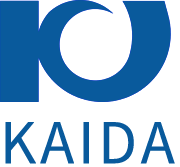Yuhuan Kaida Glasses Co., Ltd.
Address: No. 4, Shuangfeng Road,
Chenyu, Yuhuan City
Phone: 0576-89929997 89926588
Fax: 0576-89929993
Website: en.chinakaida.cn
I have been covering for a long time, wearing a lot of needles, and I have changed a lot of treatment instruments, but my child's eyesight is still not going up, even more serious, what should I do?
I often hear the parents of amblyopia children confiding, eager and helpless. These parents are likely to fall into the misunderstanding of treatment, focusing only on fine eyesight training, while ignoring the nutritional protection of the eye.
Lutein
The macula is in the optical center of the human eye and is named for its richness in lutein. It is the most sensitive part of vision, just like the "heart" of the retina. General eye chart check is to check the macular vision. Lutein is the main pigment that constitutes the macula. It can scavenge free radicals and filter harmful light, which plays an important role in maintaining normal vision.
Harvard Medical School research shows that high-density macular lutein is associated with maintaining adolescents' visual sensitivity, and lutein may alleviate age-related visual decline [1]. Adolescents are in the development of eyeballs. The "light" damage caused by insufficient or excessive consumption of lutein is the basic cause of the high incidence of myopia and amblyopia.
As we all know, the lens is a convex lens that concentrates light on the macula of the retina like a spotlight to ignite a match, creating a visual stimulus. Long-lasting and high-intensity eye training, which is filled with harmful light and free radicals, causes excessive consumption of lutein. The human body cannot synthesize lutein. If it is not replenished in time, it will cause the macula to "fail". Therefore, amblyopia training may be counterproductive.
Yang Jing [2] used lutein combined with traditional treatment to treat children with amblyopia. The effective rate of the treatment group was significantly higher than that of the control group, and the visual acuity increased significantly, which indicated that the pigmentation density of the macular area was improved, and the macular development was protected and promoted. Long-term use of lutein can improve the cure rate, and there is no obvious adverse reaction to the child.
Bilberry extract
The eye is a high-precision vision system. Although the retina is small, it has 120 million rods and 6 million to 7 million cones. From the perspective of resolution, the human eye may be a 100 million-pixel digital camera.
To ensure that each visual cell works properly, it is a difficult task for the capillaries responsible for delivering nutrients. Especially in children with long-term amblyopia training, the eye is highly tight, easily causing blurred vision, eyeball congestion and pain, photophobia, dry eyes and other visual fatigue symptoms, and even more, there will be capillary rupture.
Anthocyanin is the essence extract of European bilberry and has many pharmacological effects. It is the main active ingredient of clinical ophthalmic drugs. Studies have found that anthocyanins can increase the blood flow of the fundus microcirculation, accelerate the metabolism of substances and enhance the protection of capillaries, thereby improving the recovery time of the macula and night vision, which may be related to anthocyanins promoting rods. The regeneration of purple magenta is related [3].
According to the French Air Force clinical trial, European bilberry anthocyanins can improve night vision, reduce visual fatigue and improve the ability to adapt to low brightness. Europe has been used as an eye care product since 1965, and oral intake of 250 mg per day for patients with eye fatigue can significantly improve the symptoms of eye fatigue [4].
Zinc gluconate
Trace element zinc is one of the most important elements in human growth and development, and is a component of various enzymes and an activator. In recent years, it is known that the eye is the highest organ in the human body, especially in the retina and choroid tissue.
Zinc is involved in the synthesis of more than 80 enzymes in the body, and participates in the metabolism of the chlorophyll and the synthesis of rod cytochromes in cone cells. Zinc is also involved in the metabolism and delivery of vitamin A, and plays an important role in maintaining normal tissue morphology of the retinal pigment epithelium and maintaining normal visual function and immune function.
Zinc deficiency can cause dysfunction of rod cells and cone cells at the same time. Long-term zinc deficiency can lead to visual system developmental disorders. It is speculated that zinc deficiency can affect the structure and physiology, visual development and visual impulse transmission of the eyeball, which may be a factor in the occurrence of amblyopia [5]. Wuhan Children's Health Institute investigated the relationship between amblyopia and trace element zinc. It was found that 15 of the 20 children with amblyopia had a blood zinc concentration <normal value (480 ppm), while only 2 cases in the control group were abnormal, and the difference was statistically significant [6]. .
In addition, studies have shown that the combination of zinc and free radical scavengers can enhance its protective effect on retinal ischemic injury, and it is important to prevent retinal photodamage and peroxidation [7].
Vitamin C
Blue light can pass through the lens to the retina, which is the main light in nature that causes damage and even apoptosis of retinal pigment epithelial cells (RPE). Vitamin C, as one of the most effective antioxidant vitamins in extracellular fluids, has anti-lipid peroxidation both inside and outside the cell.
Vitamin C can effectively capture free radicals and prevent lipid peroxidation damage. Experimental research, DNA damage to RPE caused by blue light irradiation, and vitamin C, found that vitamin C can play a protective role against the above damage.
By giving vitamin C, we can intervene and alleviate the oxidative damage of RPE, which has undoubtedly important clinical value in alleviating and delaying the aging and degeneration of ocular tissues [8].
to sum up
Eating some nutritional supplements containing lutein, cranberry extract, vitamin C, and zinc gluconate can both protect the eyes and promote the development of the visual system of the child.
Tracing back to the source, the essence of amblyopia is that the development of children's visual system is imperfect, so treating children with amblyopia, to achieve both visual training and nutritional supplements, can achieve twice the result with half the effort.
Kaida glasses accessories Taizhou glasses accessories, glasses accessories manufacturers, glasses accessories wholesale

Wenzhou Sales Department Sales Manager: Mr. Jia Mobile: 13968899568 Sales in-house documentary: QQ: 2190233776 Telephone; 0576-89929998 Fax: 0576-89929993 | Shenzhen Sales Department Sales Manager: Mr. Zhang Mobile: 13828756581 Sales in-house documentary: QQ: 2325233188 Telephone; 0576-89929997 | Sales Director: Mr. Huang Mobile: 13906548578 E-mail: Y033@163.COM Yuhuan Kaida Glasses Co., Ltd. Address: No. 4, Shuangfeng Road, Chenyu, Yuhuan City website:en.chinakaida.cn |

Copyright © http://en.chinakaida.cn Yuhuan Kaida Glasses Co., Ltd. Specializing in Taizhou glasses accessories, glasses accessories manufacturers, glasses accessories wholesale, welcome to inquire!